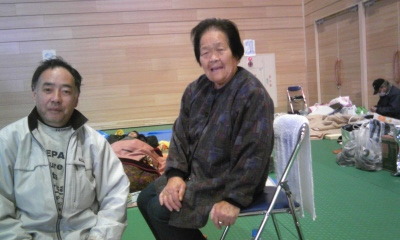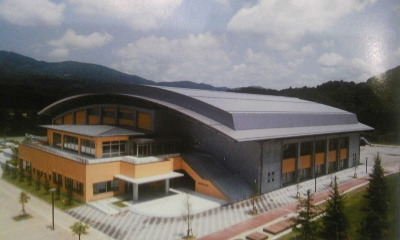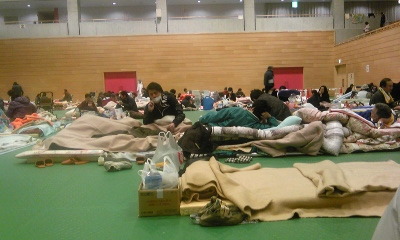Bookmark
Japanese, Foreign Media Diverge - WSJ.com
online.wsj.com/article/SB10001424052748703512404576209043550725356.html, posted 2011 by peter in fukushima japan jpquake media msm
As Japan's nuclear crisis deepens, a gulf has developed in the way in which the foreign and Japanese media are covering the unfolding drama. The disparity has led to a stark difference in public perceptions of the gravity of the situation: Many Japanese are going about their daily lives and routines as normal. In sharp contrast, many foreigners have left after being deluged with phone calls from relatives pleading them to leave Japan after watching and reading media reports in their home country.
Bookmark
Nuclear Crisis in Japan Follows Decades of Faked Safety Reports, Accidents - Bloomberg
www.bloomberg.com/news/2011-03-17/japan-s-nuclear-disaster-caps-decades-of-faked-safety-reports-accidents.html, posted 2011 by peter in business energy fukushima japan jpquake politics security
The unfolding disaster at the Fukushima nuclear plant follows decades of falsified safety reports, fatal accidents and underestimated earthquake risk in Japan’s atomic power industry.
...
Nuclear engineers and academics who have worked in Japan’s atomic power industry spoke in interviews of a history of accidents, faked reports and inaction by a succession of Liberal Democratic Party governments that ran Japan for nearly all of the postwar period.
Bookmark
Fukushima on Thursday: Prospects starting to look good • The Register
www.theregister.co.uk/2011/03/17/fukushima_thursday/, posted 2011 by peter in energy fukushima japan jpquake science
In summary it is looking more and more probable that the death and injury toll from the Fukushima quake strike will be limited to the one worker killed in a crane accident and others hurt by the quake and subsequent explosions at the site, perhaps with some very minimal long-term radiation effects among site workers. All being well, nobody else will have their health damaged in any way, and prospects are good that most or all of the current evacuation zone will be re-opened in a reasonable amount of time.
This article, unusally level-headed for a Western media outlet, was posted yesterday afternoon. To my knowledge, there is no more cause for pessimism now than it was then.
Blog Post
Helpful Neighbors Donating Food
wastholm.tumblr.com/post/3936688516/helpful-neighbors-donating-food, posted 2011 by peter in fukushima japan jpquake

Mamasan went to the coin laundry yesterday and got in a conversation with one of the other patrons, who was a local. Upon learning that mamasan and her family were evacuees, this person went home and soon returned with some home cooking: nice hot miso soup. This was their second hot meal since last Friday.
NHK is reporting right now that there are 285,000 people in over 2,200 shelters throughout the affected areas. Many shelters are short on food, medicine, and other essentials, so mamasan & co. can still be said to be relatively lucky.
Blog Post
Helpful Neighbors Donating Food
wastholm.tumblr.com/post/3936688516/helpful-neighbors-donating-food, posted 2011 by peter in fukushima japan jpquake

Mamasan went to the coin laundry yesterday and got in a conversation with one of the other patrons, who was a local. Upon learning that mamasan and her family were evacuees, this person went home and soon returned with some home cooking: nice hot miso soup. This was their second hot meal since last Friday.
NHK is reporting right now that there are 285,000 people in over 2,200 shelters throughout the affected areas. Many shelters are short on food, medicine, and other essentials, so mamasan & co. can still be said to be relatively lucky.
Bookmark
Atomic Insights Blog: Focus on food, water, shelter. Dr. Greg Jaczko is wrong and giving dangerously bad advice
atomicinsights.blogspot.com/2011/03/focus-on-food-water-shelter-dr-greg.html, posted 2011 by peter in fukushima japan jpquake opinion science
One of the nice things about being an old ring knocker (I graduated from the Naval Academy almost 30 years ago) is that you can have a pretty useful set of highly placed friends. Some of them gave me enough information to confirm what I suspected. I cannot think of any way to say this gently - Dr. Jaczko was *wrong*. It is possible someone in his staff provided bad information, but it should not be all that difficult to see the problem with some simple, back of the envelop calculations.
I would think a guy with a PhD could do the math in his head - or at least enough of the math to ask for a verification of the analysis. I would expect someone who is in charge of a large, technically competent organization would double and triple check numbers and statements before going in front of C-Span cameras and a congressional committee and making statements and recommendations that distract the entire world from a real and growing food, water and shelter crisis.
Bookmark
ScienceInsider: ScienceInsider | Japan Earthquake and Tsunammi
news.sciencemag.org/scienceinsider/japan_quake/?ref=topst, posted 2011 by peter in fukushima japan jpquake news science
Follow our continuing coverage of the crisis in Japan, including reports from the ground, global reaction, and the science behind the disaster.
Bookmark
Rebuilding northeast Japan to take years, billions
newsonjapan.com/html/newsdesk/article/88049.php, posted 2011 by peter in business finance fukushima japan jpquake
It took only minutes for the earthquake and tsunami to devastate Japan's northeast. Rebuilding will take years - if it can be afforded. The relentless wall of water that the quake unleashed killed thousands, swept away whole towns, inundated roads and knocked ports, oil refineries, steel plants and factories out of action.
Experts say the cost of the destruction likely exceeds that of the catastrophic 1995 Kobe earthquake - estimated by Standard & Poor's to have totaled $159 billion. The four most severely affected prefectures - Iwate, Miyagi, Fukushima and Ibaraki - are home to industries from farming to auto parts to electronics and make up some 6 percent of Japan's economy.
Hundreds of thousands of people have spent five nights with little food, water or heating in near-freezing temperatures as they dealt with the loss of homes and loved ones.
Blog Post
Life at the Evacuation Shelter
wastholm.tumblr.com/post/3896733858/life-at-the-evacuation-shelter, posted 2011 by peter in fukushima japan jpquake

Kenji-san (mama-san’s husband) and his mother, whom everyone calls obâchan (“Grandma”).

Mama-san and obâchan.

As I understand it, this is what the Fukushima Tamura Stadium looks like from the outside.

Their sleeping quarters. They have recently been allocated a slightly larger space. People sometimes move from one shelter to another to be with their friends or relatives. They now have one tatami per person (a tatami is a traditional Japanese straw mat, as well as a unit of measurement equivalent to about two square meters).
Blog Post
Life at the Evacuation Shelter
wastholm.tumblr.com/post/3896733858/life-at-the-evacuation-shelter, posted 2011 by peter in fukushima japan jpquake

Kenji-san (mama-san’s husband) and his mother, whom everyone calls obâchan (“Grandma”).

Mama-san and obâchan.

As I understand it, this is what the Fukushima Tamura Stadium looks like from the outside.

Their sleeping quarters. They have recently been allocated a slightly larger space. People sometimes move from one shelter to another to be with their friends or relatives. They now have one tatami per person (a tatami is a traditional Japanese straw mat, as well as a unit of measurement equivalent to about two square meters).
|< First < Previous 81–90 (96) Next > Last >|
![[photo]](/images/peter_autumn)